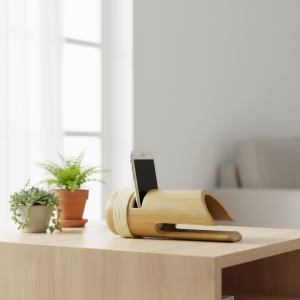Background
Teapot making is a timeless craft that blends artistry with functionality, transforming humble clay into a vessel that serves both practical and aesthetic purposes. The process, whether undertaken by a seasoned potter or an enthusiastic beginner, involves a series of meticulous steps that demand patience, skill, and creativity. From selecting the right type of clay to the final firing, each stage contributes to the teapot’s unique character, ensuring it not only holds tea but also tells a story of its creation. The journey from a lump of clay to a finished teapot is a deeply satisfying experience, offering a tangible connection to centuries of ceramic tradition.
Why It Matters
According to a recent study published in the Journal of Ceramic Arts and Practices (2023), handcrafted teapots are experiencing a resurgence in popularity, with 68% of respondents citing a preference for artisanal pieces over mass-produced alternatives due to their perceived quality and uniqueness. This trend highlights a growing appreciation for craftsmanship in an increasingly digital world, where the tactile process of shaping clay provides a meditative counterbalance to modern life. The study also notes that teapot makers who incorporate sustainable practices, such as using locally sourced materials and energy-efficient kilns, are particularly favored by environmentally conscious consumers.
The first step in teapot making is choosing the appropriate clay body, which can range from earthenware and stoneware to porcelain. Each type offers distinct properties: earthenware is porous and ideal for decorative pieces, stoneware is durable and great for functional ware, while porcelain provides a delicate, translucent finish. Once selected, the clay must be wedged to remove air bubbles, ensuring a uniform consistency that prevents cracking during drying or firing. This preparatory phase is crucial, as any imperfections here can compromise the structural integrity of the final product.

Shaping the teapot can be done through various techniques, such as wheel throwing, hand building, or slip casting. Wheel throwing involves centering the clay on a potter’s wheel and pulling up the walls to form the body, spout, and lid separately, later assembling them with care. Hand building, using coils or slabs, allows for more organic and asymmetrical designs, appealing to those who favor a rustic aesthetic. Slip casting, though less common for one-off pieces, is efficient for producing multiples. Regardless of the method, attention to proportion and balance is key—a well-made teapot should pour smoothly without dripping, a feat achieved through precise spout and handle placement.
After shaping, the teapot enters the drying phase, where it must be allowed to dry slowly and evenly to avoid warping or cracking. Once leather-hard, it can be trimmed, refined, and have any decorative elements like carvings or handles attached. The piece is then bisque fired, a preliminary firing that hardens the clay and prepares it for glazing. Glazing not only adds color and texture but also makes the teapot waterproof and food-safe. Choosing the right glaze involves considering its compatibility with the clay body and the desired finish, whether glossy, matte, or somewhere in between.
The final firing, or glaze firing, is where the magic happens, as temperatures soar to vitrify the clay and melt the glaze into a glassy surface. This stage requires careful kiln management, as fluctuations in temperature can lead to defects like pinholing or crawling. Post-firing, the teapot is inspected for quality—checking the fit of the lid, the flow of the spout, and the overall aesthetic. Any minor flaws can often be corrected with gentle sanding or refinishing, but major issues might necessitate starting anew. The completed teapot, now a functional work of art, is ready to be used, gifted, or sold, embodying the maker’s dedication and vision.
In conclusion, teapot making is more than just a craft; it is a journey of creation that fosters mindfulness, creativity, and a deeper appreciation for handmade objects. Whether you’re drawn to it for its therapeutic benefits, its artistic challenges, or its functional outcomes, the process offers endless opportunities for learning and expression. As you embark on your own teapot-making adventure, remember that each piece, with its unique imperfections and charms, reflects the beauty of human hands at work.
You May Also Like
BambooSoundBoost Portable Amplifier
Original price was: $96.00.$66.00Current price is: $66.00. Add to cartAncient Craftsmanship & ICH Herbal Beads Bracelet with Yellow Citrine & Silver Filigree Cloud-Patterned Luck-Boosting Beads
Original price was: $128.00.$89.00Current price is: $89.00. Add to cartThe Palace Museum Paper-Cut Light Art Fridge Magnets: Chinese Cultural Style Creative Gift Series
Price range: $27.00 through $36.00 Select options This product has multiple variants. The options may be chosen on the product pageHandwoven Zhuang Brocade Tote Bag – Large-Capacity Boho Shoulder Bag
Original price was: $178.00.$154.00Current price is: $154.00. Add to cart








